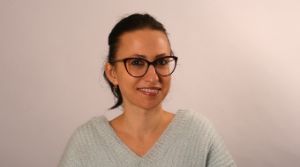About the project
Skjeggestad et al. (2017) claims that there is a need to investigate how interaction between health workers with different L1 languages and cultural background and their patients is. Landmark et al. (2017) also analysed a few years ago consultations where both physicians and patients had Norwegian a second language.
In my research project I especially address the following research questions:
- Which communication challenges do the Polish physicians in Norway meet when they speak L2 Norwegian with their patients and in the wild?
- How do they cope with these challenges and which language strategies do they use?
- How do Polish physicians implement the patient-centred model of communication when they interact with their Norwegian-speaking patients?
I will analyse semi-detached research interviews with 25 Polish physicians working in four regional health trusts in Norway and I especially focus on strategies that they use to overcome these challenges, both self-reported strategies and those which are present in excerpts from videorecorded consultations. I point out the strategies Polish physicians use in certain consultations, both those favourable and unfavourable to a patient-centred way of communication. Further, I will also analyse 40 naturally occurring patient-doctor consultations which I recorded in six Norwegian hospitals across the country. I use the multimodal interaction analysis and I pay special attention to how physicians practice shared decision making with their patients, how they express their empathy and use body-oriented gestures (Kendon, 2014; Gullberg, 1998) together with gaze (Ruusuvuori, 2001).
The combination of factors mentioned above may contribute to a better understanding between doctors and patients when one of them speaks the language of the consultation as L2. Both the cultural and institutional competence may in addition enable fluid and successful communication between doctors and patients.
References
Landmark, A.M.D., Oftsad, E.H., Huggas, E., Svennevig, J. (2017). Eliciting patient preferences in shared decision-making (SDM): Comparing conversation analysis and SDM measurements. Patient Education and Counseling, 100(11): 2081-2087.
Skjeggestad, E., Norvoll, R., Sandal, G., & Gulbrandsen, P. (2017). How do international medical graduates and colleagues perceive and deal with difficulties in everyday collaboration? A qualitative study. Scandinavian Journal of Public Health, 45(4), 428-435. Retrieved August 12, 2021, from https://www.jstor.org/stable/48615238.
